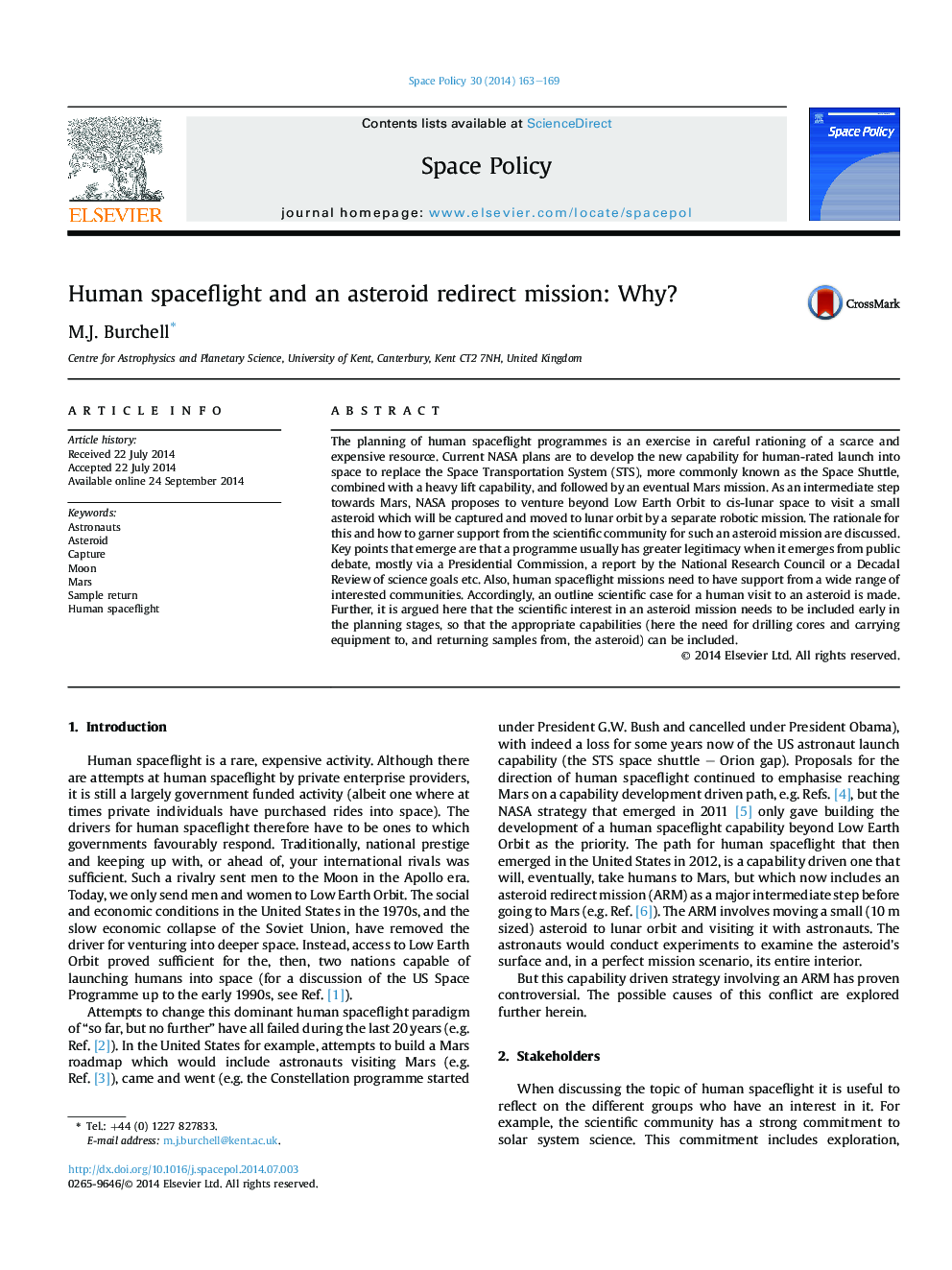| Article ID | Journal | Published Year | Pages | File Type |
|---|---|---|---|---|
| 1130831 | Space Policy | 2014 | 7 Pages |
The planning of human spaceflight programmes is an exercise in careful rationing of a scarce and expensive resource. Current NASA plans are to develop the new capability for human-rated launch into space to replace the Space Transportation System (STS), more commonly known as the Space Shuttle, combined with a heavy lift capability, and followed by an eventual Mars mission. As an intermediate step towards Mars, NASA proposes to venture beyond Low Earth Orbit to cis-lunar space to visit a small asteroid which will be captured and moved to lunar orbit by a separate robotic mission. The rationale for this and how to garner support from the scientific community for such an asteroid mission are discussed. Key points that emerge are that a programme usually has greater legitimacy when it emerges from public debate, mostly via a Presidential Commission, a report by the National Research Council or a Decadal Review of science goals etc. Also, human spaceflight missions need to have support from a wide range of interested communities. Accordingly, an outline scientific case for a human visit to an asteroid is made. Further, it is argued here that the scientific interest in an asteroid mission needs to be included early in the planning stages, so that the appropriate capabilities (here the need for drilling cores and carrying equipment to, and returning samples from, the asteroid) can be included.
